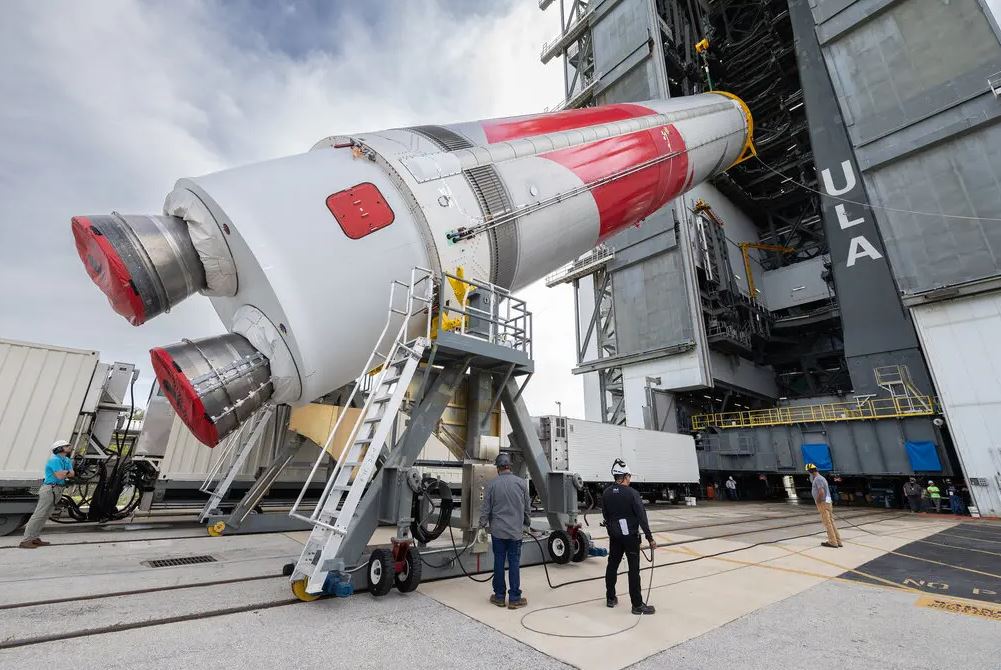It’s not easy to construct a rocket. It’s considerably more challenging to get a brand-new rocket ready for its first voyage.
That has proven to be the case with the Vulcan, a new rocket created by Boeing and Lockheed Martin’s joint venture, United Launch Alliance. The original launch date for the first Vulcan was May, but in March, a fuel tank ruptured during testing. The Vulcan’s top stage and the test stand were both destroyed when the hydrogen escaping from the tank caught fire.
United Launch Alliance CEO Tory Bruno told reporters on a conference call on Thursday that the issue had been identified and was being worked on, and that the first Vulcan launch should take place later this year.
SpaceX, Elon Musk’s rocket firm, has dominated the market for sending satellites and humans into orbit in recent years. Satellite operators, NASA, and the U.S. Space Force have all benefited from SpaceX’s cheaper pricing and prolific launch rate. Customers like the Space Force, however, want not to have to commit to just one vendor.
Before the Space Force feels comfortable employing the Vulcan rocket for spy satellites and other national security payloads, the United Launch Alliance must complete two successful Vulcan flights. Getting that accreditation will take longer if the firm takes longer than expected to accomplish the first two tasks.
United Launch Alliance’s Atlas V and Delta IV rockets, which have a near-perfect record of flight reliability, were used exclusively for national security missions for the better part of a decade. However, since the rockets were so costly, the company had practically no commercial clients.
As a result of SpaceX’s lawsuit, the military agreed to consider SpaceX’s rockets for certification for use in national security missions. Since the Atlas V’s booster stage is powered by Russian-built RD-180 engines, some in Congress, most notably Arizona Senator John McCain, have raised growing doubts about its reliability for the American military.
While SpaceX has successfully launched roughly 50 rockets so far this year, United Launch Alliance has only managed one launch (a Delta IV).
ULA announced the Vulcan’s development in 2014 to replace the Atlas V and Delta IV. The production of the older rockets has ceased, while the development of the Vulcan is only getting started.
Blue Origin, founded by Amazon founder Jeff Bezos, provided the engines for the Vulcan, rather than Russia. The Vulcan booster and Blue Origin’s own New Glenn rocket, both currently under development, will be powered by Blue Origin’s BE-4 engines.
Blue Origin’s first Vulcan rocket’s engines survived test firings, but CNBC reported on Wednesday that one engine intended for the second flight detonated during recent testing. The CEO, Mr. Bruno, assured passengers that this would not result in any more flight delays.
The first Vulcan mission will transport the remains of people who wanted to be buried in space as part of a funeral ceremony provided by a company called Celestis, as well as a commercial solar lander built by Astrobotic Technology of Pittsburgh.
Dream Chaser, a space aircraft now under construction by Sierra Space of Boulder, Colorado, will be sent into orbit on a test flight aboard the second Vulcan launch. The present version of Dream Chaser will only be used to transport freight to and from the International Space Station; it will not be utilised to transport humans.
A national security mission might take off as early as the second quarter of next year if the first two flights go well and Space Force reviews the data to certify the Vulcan rocket.
ULA President Tory Bruno has said that the company plans to fly 25 missions for both government and commercial clients in 2025. “It’s a much more balanced portfolio,” Mr. Bruno said. To quote: “It quadruples our launch rate.”

